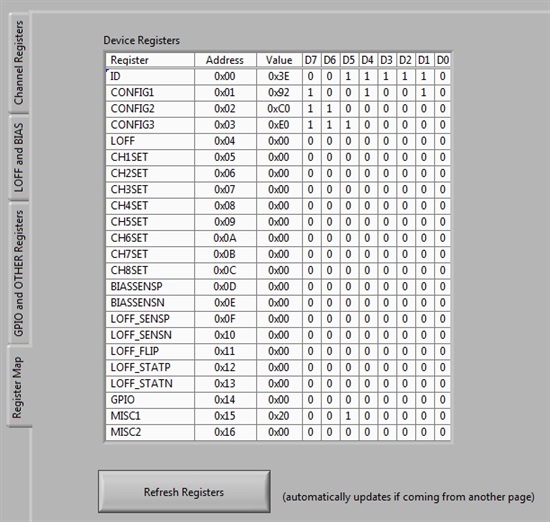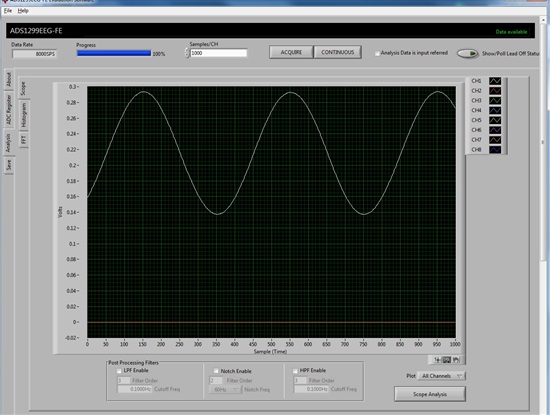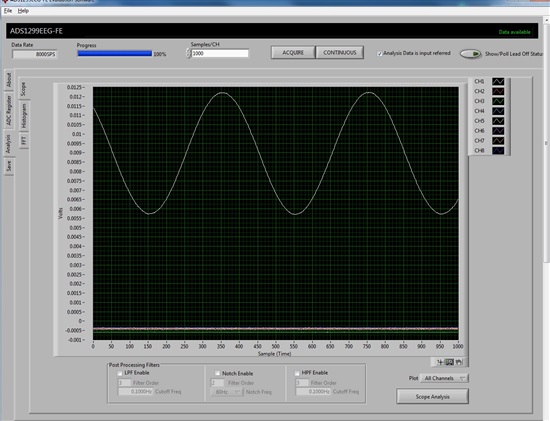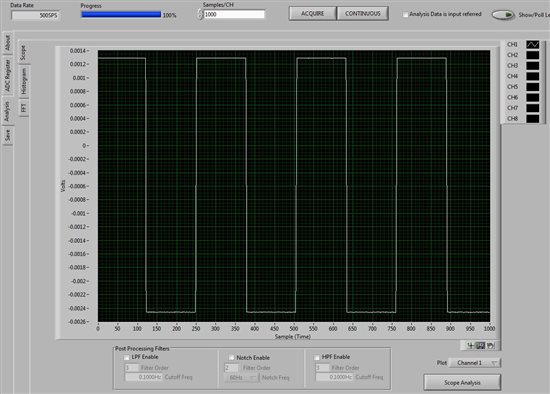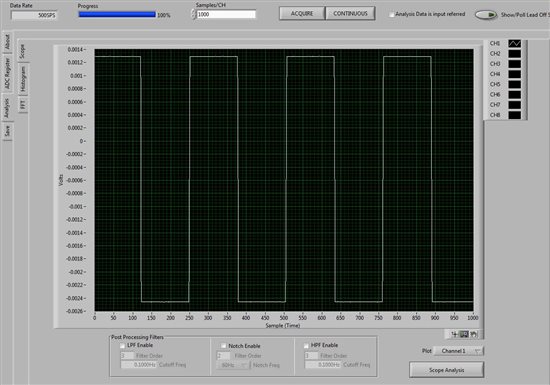Hi,
We bought an ADS1299 evaluation kit, for now i'm testing it in unipolar mode and applying an AC source to channel 1+ and Agnd with Vpeak-peak = 80mV, Voffset = 60mV, Freq = 20Hz. I set up the board as follow:
- JP2 = 2-3, JP20 = 1-2 (unipolar analog supply)
- JP7 = 2-3, JP8 = 1-2 (SRB1 to Ref_Elec)
- JP25 = 5-6, 1-2, 3 = GND
Hardware setup:
Evaluation board: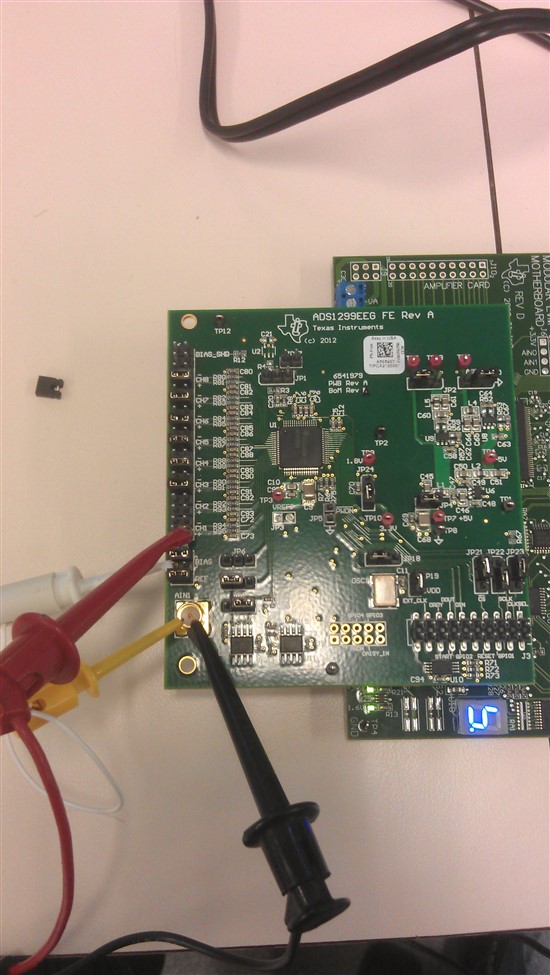
Vac source signal(goes on CH1):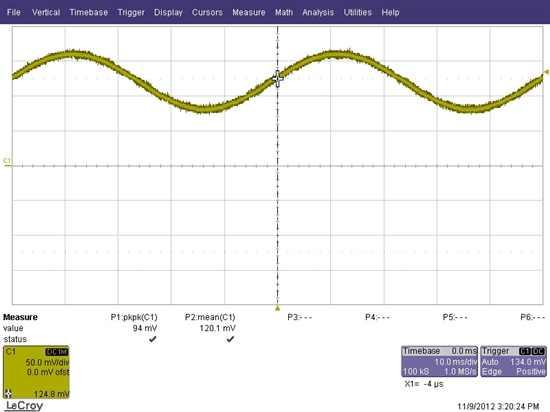
Analysis Scope gain = 1: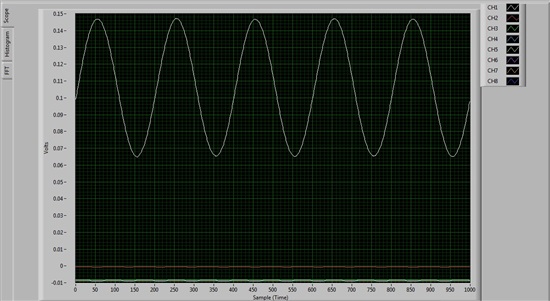
Voffset = 110mV Vpeak-peak = 80mV
Analysis Scope gain = 24: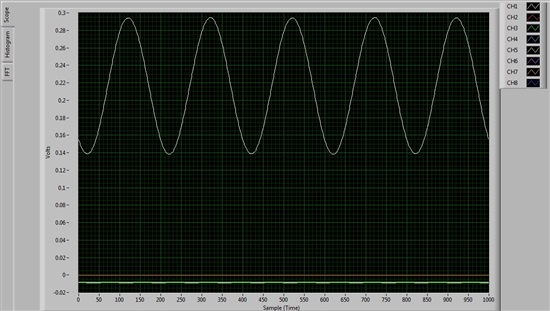
Voffset = 220mV Vpeak-peak = 150mV
Why i dont get an amplification of 24 at graph 2? In this test i only wanted to see if the PGA works, above you can see i'm getting an amplification of max 150/80 = 1.9. Did i set up something worng? Hope someone can provide me some support with this.
thanks in advance,


